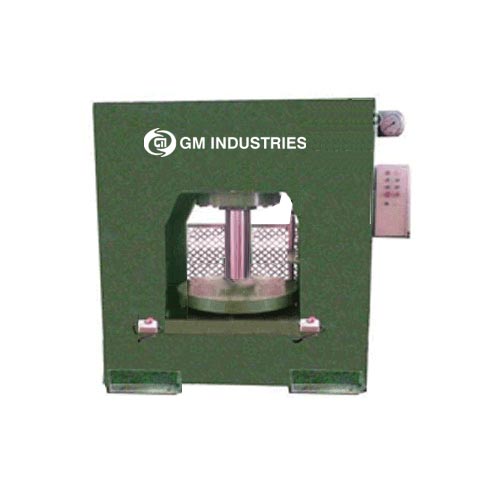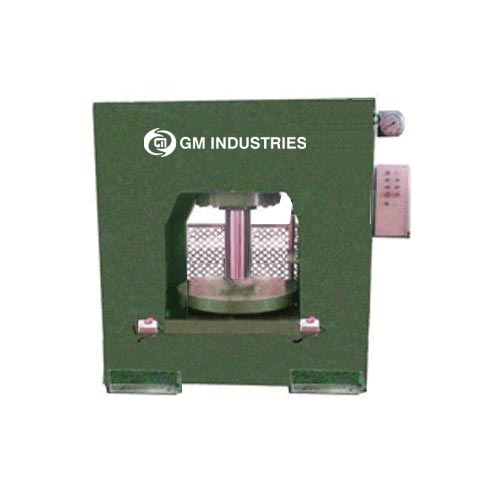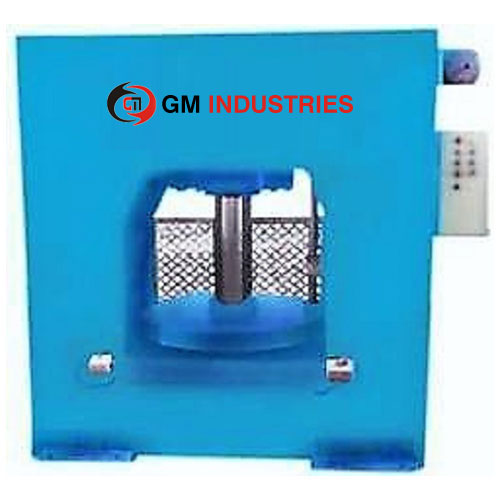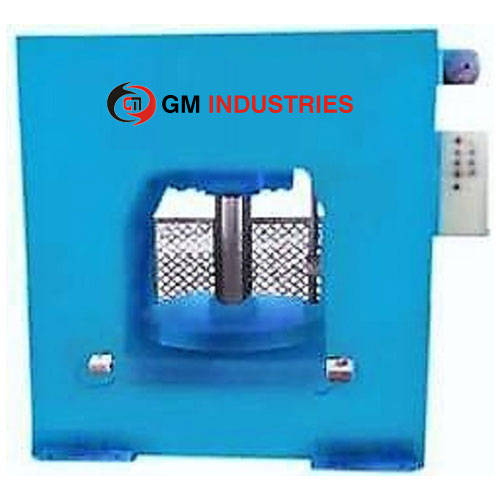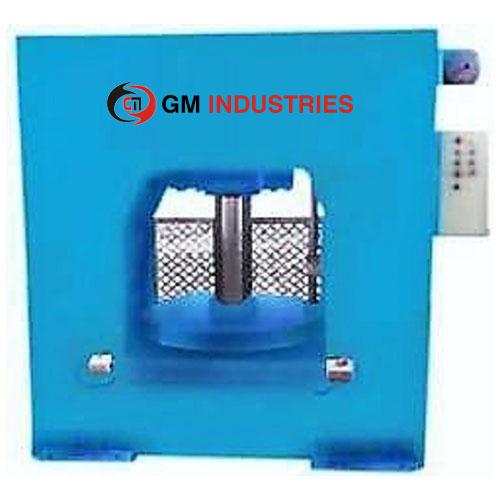Hydraulic Press
What is a Hydraulic press?
A hydraulic press is a machine that utilizes hydraulic cylinders to generate a compressive force. The TGM hydraulic press machine manufactured by GM Industries is highly appreciated by clients for its high quality standards and optimum performance. It is designed and manufactured using the latest technology and can be used in various applications such as trans molding, vertical injection molding, rubber molding, FRP & DMC molding, and deep drawing.
The operator of the TGM Hydraulic Press has access to the press from three sides and all the pillars act as bearing rods for the moving platen. GM Industries offers Hydraulic Press models in different capacities, ranging up to 3000 tons, such as pillar type, gate type, deep draw, and C frame, according to the specific requirements of the customers.
GM Industries is a leading hydraulic press manufacturer that specializes in manufacturing hydraulic presses and is known for its high-quality products and customer-centric approach. With a focus on innovation and excellence, GM Industries is a prominent hydraulic press supplier that has established itself as a leading player in the hydraulic press industry.
Types of Hydraulic press
A C Frame hydraulic press is a type of press that features a C-shaped frame. This design provides more accessibility and flexibility to the operator during the loading and unloading of materials. C Frame hydraulic presses are commonly used in applications that require deep drawing, coining, and punching.
An H Frame hydraulic press is a type of press that features an H-shaped frame. This design provides more stability and rigidity to the machine, making it ideal for applications that require high precision and accuracy. H Frame hydraulic presses are commonly used in applications such as forming, bending, and straightening.
A Hydraulic Baling Press is a type of press that is used to compress waste materials into compact and manageable bales. These presses are commonly used in industries such as recycling, waste management, and manufacturing. Hydraulic Baling Presses are available in various sizes and capacities to suit different types of waste materials.
A Hydraulic Deep Drawing Power Press is a type of press that is used in the manufacturing of components with deep drawing requirements. These presses can exert high pressure and force, making them ideal for applications such as forming, bending, and punching.
A Hydraulic Scrap Baling Press is a type of press that is used to compress and bale scrap materials such as metal, plastic, and paper. These presses are commonly used in recycling and waste management industries. Hydraulic Scrap Baling Presses are available in various sizes and capacities to suit different types of scrap materials.
Hydraulic Press Price
The Hydraulic press price in India offered by hydraulic press manufacturers in India is listed below: –
| Product Range | Price |
| C Frame Hydraulic Press | ₹ 2.16 Lakh / Unit |
| H Frame Hydraulic Press | ₹ 4 Lakh / Unit |
| Hydraulic Baling Press | ₹ 5.4 Lakh / Unit |
| Hydraulic Deep Drawing Power Press | ₹ 6.5 Lakh / Unit |
| Hydraulic Scrap Baling Press | ₹ 8.50 Lakh / Unit |
(Prices shown above are provisional prices and may change due to different market conditions and requirements.)
For more information on any of our high quality products or getting accurate prices contact GM Industries at
Call Us
+(91)-9820533489 / 7738562224
Enquiry Form
Submit
How does a hydraulic press work?
Hydraulic Press Working Principle: – The working principle of a hydraulic press is based on Pascal’s Law, which states that pressure exerted on a fluid is transmitted equally in all directions. In a hydraulic press, a hydraulic system consisting of a pump, cylinder, and valves is used to generate force.
The hydraulic system is filled with a fluid, usually oil, which is pumped by the pump into the cylinder. The cylinder contains a piston that moves in response to the fluid pressure. The piston is connected to a platen or ram that exerts force on the material being processed.
When the pump is activated, it creates pressure in the hydraulic system, which is transmitted to the cylinder. The pressure forces the piston to move, and this movement is transmitted to the platen or ram, which exerts force on the material.
The force generated by the hydraulic press is determined by the area of the piston and the pressure of the fluid. By adjusting the pressure and area, the force can be controlled to suit different applications.
The hydraulic press can be operated manually or automatically, and it can be used in various applications such as forming, bending, punching, deep drawing, and baling. It is a versatile and efficient machine that can generate high forces with relatively low input power.
Advantages of Hydraulic Press
Hydraulic presses offer several advantages over other types of presses, including:
High force generation
Hydraulic presses can generate high levels of force using relatively low input power, making them highly efficient machines.
Precision control
The pressure and force of a hydraulic press can be precisely controlled, making it ideal for applications that require high precision and accuracy.
Versatility
Hydraulic presses can be used in various applications, such as forming, bending, punching, deep drawing, and baling.
Durability
Hydraulic presses are built to withstand heavy loads and high pressures, making them durable and long-lasting machines.
Accessibility
Hydraulic presses are designed for easy accessibility, allowing the operator to load and unload materials quickly and efficiently.
Safety
Hydraulic presses feature safety mechanisms such as emergency stops, guards, and interlocks to prevent accidents and ensure the safety of the operator.
Lower maintenance
Hydraulic presses require less maintenance compared to other types of presses, resulting in lower downtime and operating costs.
Overall, hydraulic presses are highly efficient, versatile, and durable machines that offer precise control, accessibility, and safety. These advantages make them suitable for a wide range of applications across various industries.
Applications of Hydraulic Press
Hydraulic presses are used in various industries for a wide range of applications, some of which are listed below:
- Automotive industry: Hydraulic presses are used in the automotive industry for applications such as deep drawing, forming, and stamping of metal components for cars, trucks, and buses.
- Aerospace industry: Hydraulic presses are used in the aerospace industry for forming, shaping, and joining metal components used in aircraft and spacecraft.
- Construction industry: Hydraulic presses are used in the construction industry for applications such as bending and shaping of metal beams and plates.
- Manufacturing industry: Hydraulic presses are used in the manufacturing industry for applications such as forging, extruding, and coining of metal components used in various products.
- Recycling industry: Hydraulic presses are used in the recycling industry for compressing and baling materials such as metal, plastic, and paper.
- Woodworking industry: Hydraulic presses are used in the woodworking industry for applications such as laminating, veneering, and bending of wood components.
- Rubber industry: Hydraulic presses are used in the rubber industry for applications such as molding, curing, and compression of rubber components used in various products.
- Food industry: Hydraulic presses are used in the food industry for pressing and extracting juices, oils, and other fluids from fruits and vegetables.
Overall, hydraulic presses are versatile machines that find application in a wide range of industries for various applications.
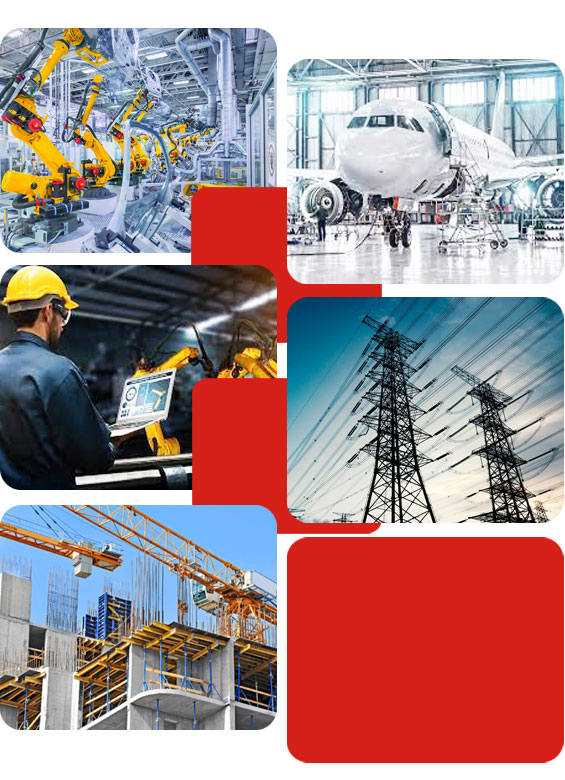
How do I choose a Hydraulic press?
Selecting the appropriate Hydraulic press for your requirements can be an intimidating task, but with the help of GM Industries, it doesn’t have to be. GM Industries is a reputed hydraulic press suppliers in India of high-quality hydraulic presses for various industries. With years of experience and expertise, GM Industries can help you find the right hydraulic press for your application needs. We offer a wide range of hydraulic press models, such as pillar type, gate type, deep draw, C-frame, and more, with capacities up to 3000 tons. Whether you are in the automotive, aerospace, manufacturing, recycling, or any other industry, GM Industries can provide you with customized hydraulic press solutions that meet your specific requirements. With a commitment to quality, performance, and customer satisfaction, GM Industries is your go-to source for hydraulic press solutions.
Frequently Asked Questions
A hydraulic press is a machine that uses hydraulic pressure to generate force for various applications, such as pressing, punching, bending, or forming.
A hydraulic press works by using a hydraulic cylinder to generate force that is transmitted through a fluid-filled system to the press ram or platen. The force generated can be controlled and adjusted using valves and pressure regulators.
The main components of a hydraulic press include a hydraulic cylinder, hydraulic fluid, hydraulic pump, valves, pressure gauges, and a press frame.
The types of hydraulic presses include C-frame, H-frame, Hydraulic Baling Press, Hydraulic Deep Drawing Power Press, Hydraulic Scrap Baling Press each with its unique features and applications.
Hydraulic presses are used in various industries for applications such as metal forming, rubber molding, deep drawing, forging, extruding, and baling.
The maximum force that a hydraulic press can generate depends on its design and capacity, but some presses can generate up to 10,000 tons of force.
A hydraulic press uses hydraulic pressure to generate force, while a mechanical press uses mechanical force generated by a crankshaft or flywheel.
A single-acting hydraulic press generates force only in one direction, while a double-acting hydraulic press generates force in both directions.
A servo hydraulic press uses a servo motor and controller to precisely control the force and speed of the ram, while a non-servo hydraulic press uses a hydraulic pump and valves to control the force and speed.
The hydraulic fluid is used to transmit the force generated by the hydraulic cylinder to the press ram or platen.
The common types of hydraulic fluids used in hydraulic presses include mineral oil, water-based fluids, and synthetic fluids.
The safety features of a hydraulic press include emergency stops, guards, interlocks, and safety valves to prevent accidents and ensure operator safety.
The maintenance required for a hydraulic press includes regular inspection, cleaning, lubrication, and replacement of worn-out components.
The lifespan of a hydraulic press depends on its design, quality, and maintenance, but a well-maintained hydraulic press can last for several decades.
To choose the right hydraulic press for your application, you need to consider factors such as force requirements, speed, precision, material type, and budget.
Yes, most hydraulic press manufacturers offer customization options to tailor the press to your specific application needs.
The installation and operation of a hydraulic press require proper training and adherence to the manufacturer’s instructions and safety guidelines.
